APAH: Unit 3 Terms
1/37
Earn XP
Description and Tags
Name | Mastery | Learn | Test | Matching | Spaced |
|---|
No study sessions yet.
38 Terms
codex
book with vellum pages
conitnuous narrative
a type of narrative that illustrates multiple scenes of a narrative within a single frame; ex Column of Trajan
encaustic
painting technique that uses wax as a medium to carry color
icon
Greek for image or painting
iconoclasm
destruction of icons

spandrel
triangular space between columns
martyrium
burial place of a martyr
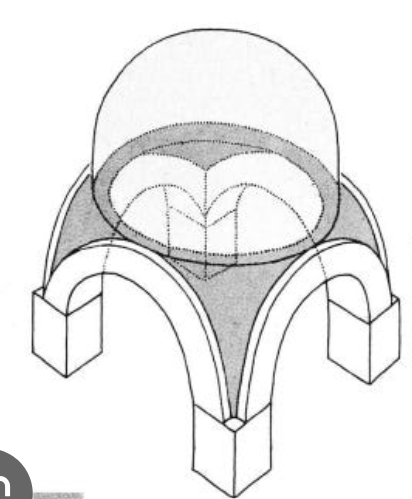
pendentive
triangular segment of a spherical surface used to hold up a dome
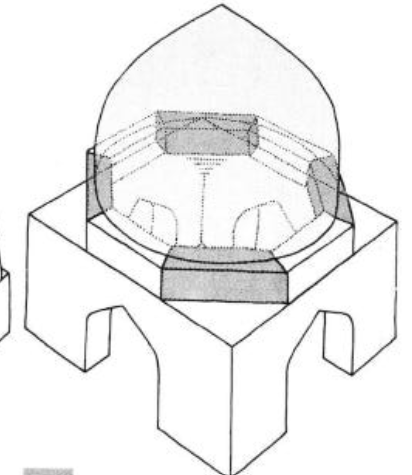
squnich
triangular corner that supports a dome
theotokus
Mary as the “God-bearer”
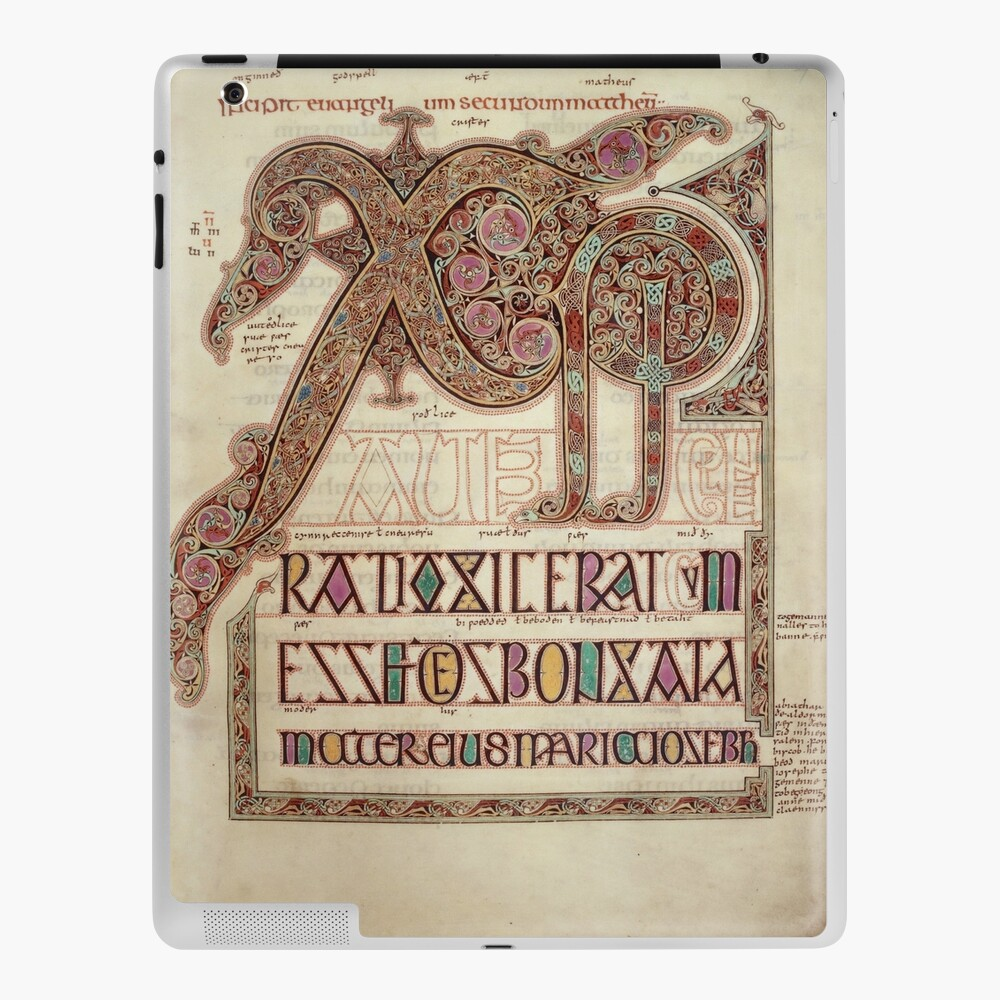
XP (chi ro)
Greek word for Christ
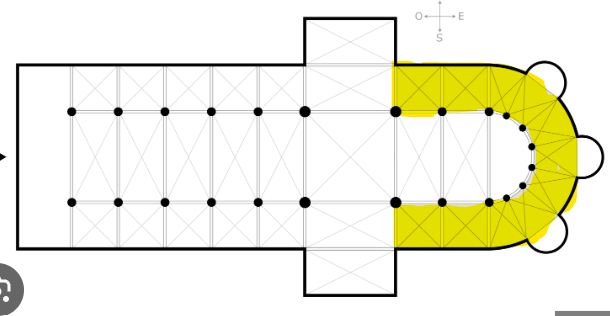
ambulatory
aisle or walkway around a Church used mainly so pilgrims could visit relics without entering the nave during mass
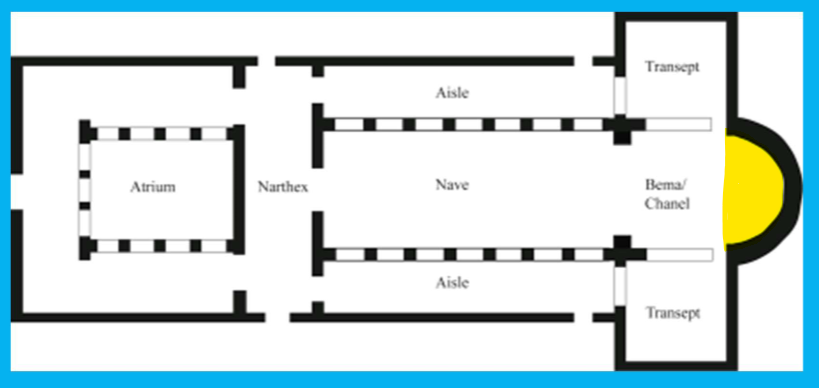
apse
semicircular recess usually behind the altar
atrium
area of a cathedral before you enter
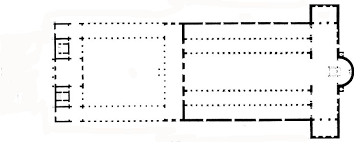
axial plan
architectural plan in which a church is organized along an axis; has a nave
basilica
large oblong hall or building with colonnades and a semiciruclar apse used in ancient Rome as law courts or for public assemblies; later repurposed by Christians as churches
catacomb
underground cemetary consisting of a subterranean gallery with recesses (loculi) for tombs; usually constructed by ancient Romans

central plan
round church with a central altar (ex. San Vitale)
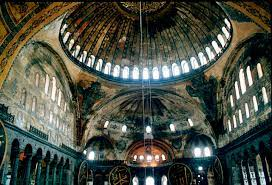
clerestory
upper part of the nave & transept of a church/basilica containing a series of windows to admit light into the building; light = God

coffer
series of rectangular sunken panels on a dome acting as supports and decreasing the weight of the dome (seen in the Pantheon)
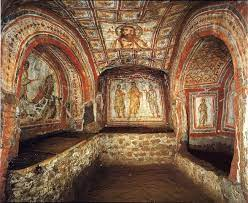
cubicula
chapels (for families); seen in Catacomb of Priscilla
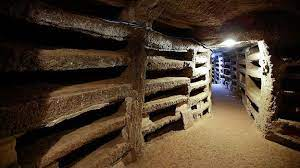
loculi
indentions in a wall; seen in Catacomb of Priscilla
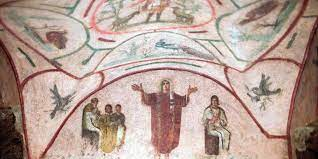
lunette
image over an arch (seen in Catacomb of Priscilla, female priest)
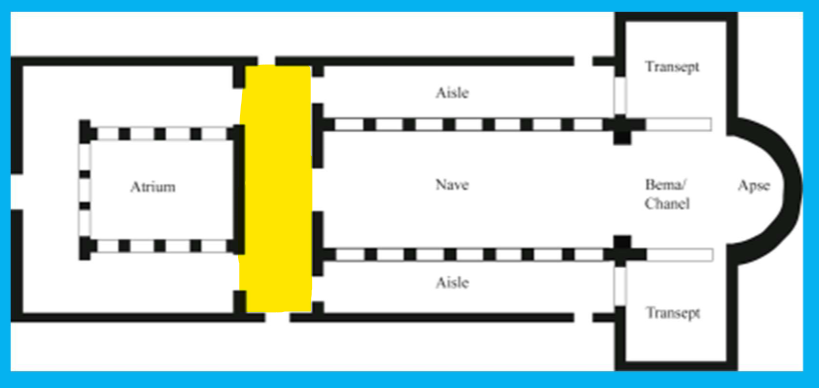
narthex
transitional antechamber of a church/basilica between the atrium and nave

nave
long part in the middle of a building/basilica
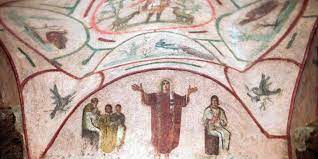
orant figure
figure in a prayer pose (ex. woman in Catacomb of Priscilla)
spolia
“spoils”; part of a work taken from another place & used in Christian Churches; ex. columns at Santa Sabina & head of reliquary of St. Foy
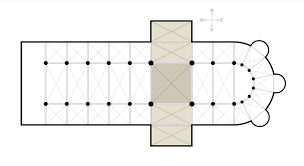
transept
parts of a church forming the arms of the cross shape
fibulae
decorative clasp used to secure a cloak & display wealth (buried with people)
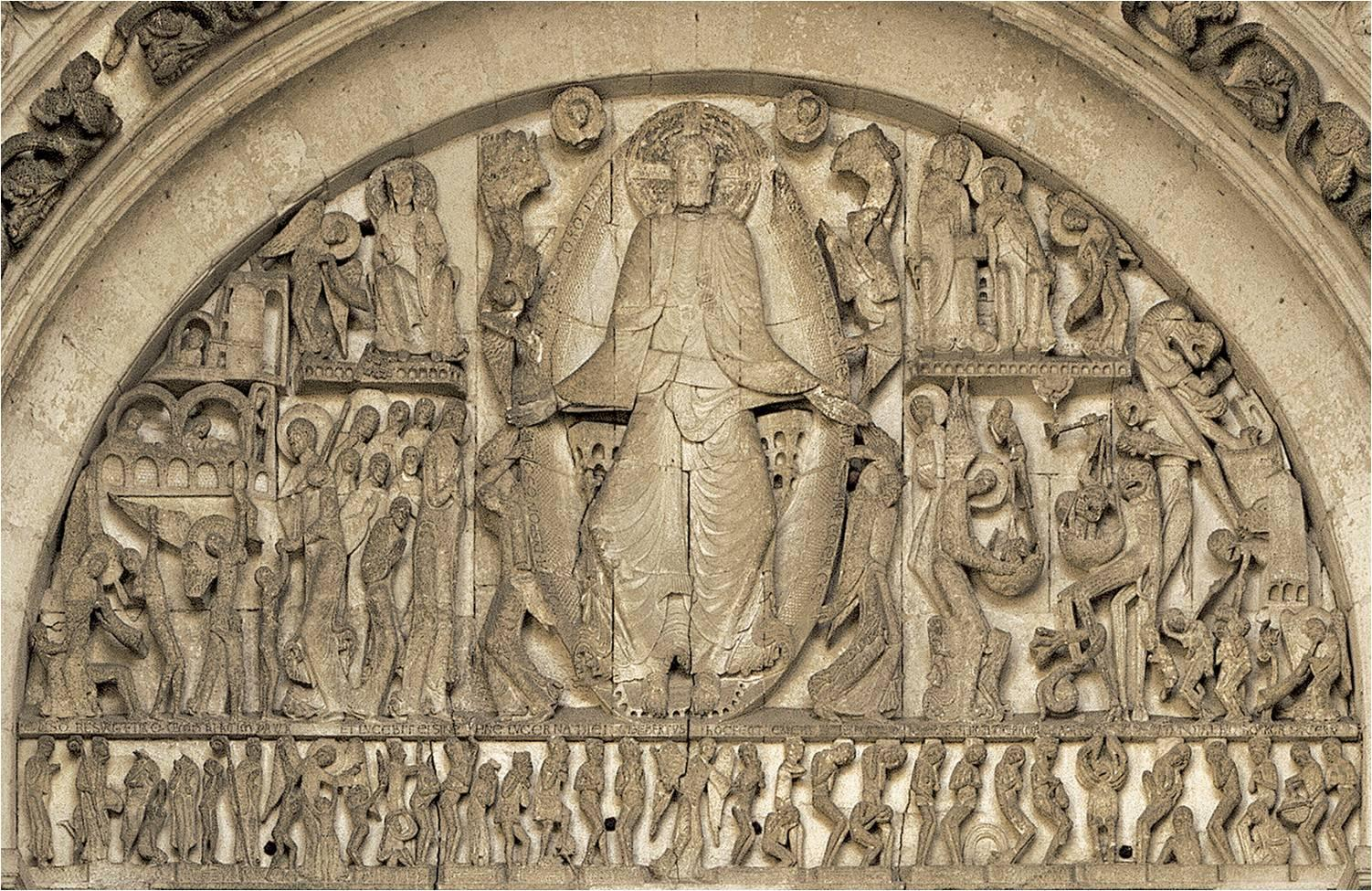
tympanum
arching area over a door in a Romanesque Cathedral carved with biblical stories (ex. Last Judgment at Cathedral of St. Foy)
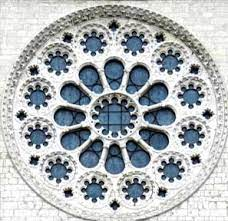
tracery
decorative stonework used to secure stained glass

reliquary
beautifully decorated receptical used to hold the bones or remains of Saint’s possessions (ex. St. Foy)
horror vacui
practice of filling all spaces with carving work (ex. Last Judgement Tympanum or Ludovisi Battle Sarcophagus)
barrel vault
rounded arch ceiling which held the roof by pushing the weight onto thick walls
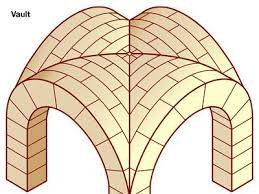

rose window
large round windows filled with stained glass usually at the ends of a nave or transept (seen at Chartres Cathedral)
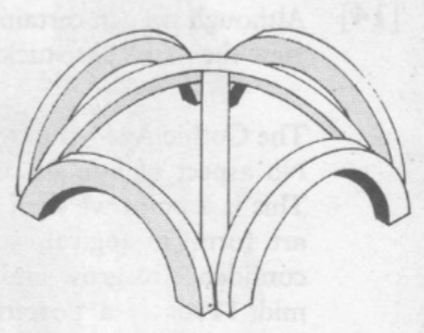
rib vault
type of vaulted celining that used sections of stone across to reinforce it
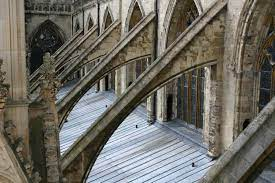
flying buttresses
slanting structure projecting from a wall used to strengthen it
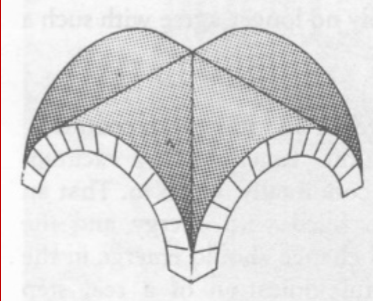
groin vault
vault produced by the intersection of two barrel vaults at a right angle